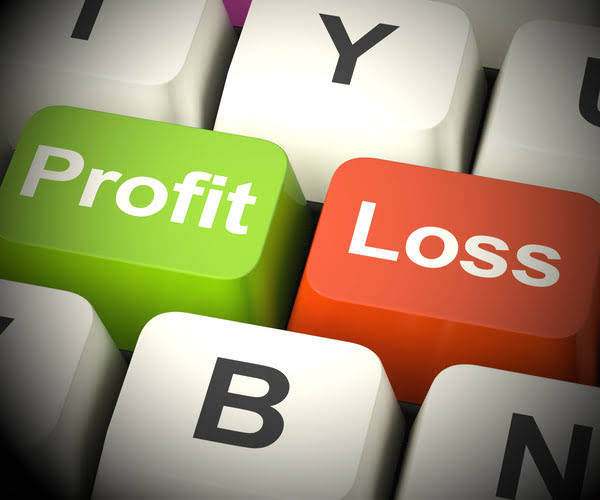Though they’re relatively cheap, make sure to take the time to hire a quality bookkeeper. Sorting through messy financial statements after the fact is a tremendous headache, and it’s always easier to do things right the first time. You also are assigned a dedicated account manager to help facilitate the completion of the project. The Forbes Advisor Small Business team is committed to bringing you unbiased rankings and information with full editorial independence. Get the bookkeeping, tax prep, and financial expertise every startup founder needs. Whether it’s guiding you through fundraising or financial reporting analysis, we’ll take it from here.
Instead, you can turn to the expertise of a CFO for startups to establish and perfect the financial infrastructure of your business. It can be tough for startup leaders and founders to track how every dollar and cent is moving in and out of the business. A CFO for startups can keep track of invoicing and payments, monitor products or features that aren’t performing well, and dive into the nuances of how money is being spent in your business. Finance teams are responsible for producing regular financial reports, including income statements, balance sheets and cash flow statements. They develop and implement financial strategies that align with the startup’s objectives. They work closely with the leadership team to create budgets, forecast revenue and expenses, and evaluate investment opportunities.
- Quickbooks Online is another popular online accounting software providing users with the services they need to maintain a financially healthy business.
- A CFO is a key player in a company’s financial viability, responsible for managing cash flow and treasury, overseeing financial planning, and ensuring regulatory compliance.
- A CFO for startups provides your business with C-Suite financial and accounting expertise and guidance.
- Let’s review the benefits of each type of financial professional, how much you can expect to pay them and when they would be most useful for your startup.
- Thanks to powerful tools that enable faster and easier data analytics, the role of the CFO is expanding to include being a business strategy adviser.
The journal entries are made from documents that contain financial information, such as receipts, bills, and invoices. But when it comes to the financial infrastructure of your startup, founders and leaders should turn to the experts. When startups are first created, their infrastructure might be haphazard, and this might work at first. Kruze serves hundreds of startups across every major startup industry. This enables us to offer powerful advice to our clients, as we have startup statistics that we can use to help provide helpful guidance for early-stage companies. From the typical marketing spend to metrics VCs use to analyze investment opportunities, we know what it takes to get to the next level.
I had an excellent experience working with the team at Kruze – from seed funding through acquisition of my company. They are timely, professional, and extremely knowledgeable when it comes to all things startup finance. Our team has experience producing accounting and tax due diligence requests for the biggest public companies. Every month we help founders navigate the most important transaction of their life. CPAs perform many of the same functions as regular accountants but with a superior level of expertise and experience. They often lead a team of less experienced accountants that are in the process of pursuing their certification.
Ecommerce – Accounting, Tax and CFO services
Kruze knows R&D, SAFE Notes, SaaS, and venture debt and they gave us valuable advice. With Kruze on your side, your team will have the numbers – and advice – you need to survive due diligence with your valuation intact. Please note, our expertise is not focused on LLCs or bootstrapped companies.
Compliance And Risk Management
The client has an obligation to pay the business for services rendered or goods sold. In short, invoices are an important part of how small businesses make money. With Pilot, you get an advisor who knows your startup business and growth stage. We’ll help set up your full finance stack for scale, including preferred cash–sweep accounts, payroll, and expense management.
Chief Financial Officer: These are the duties of a CFO
If your business is seeking venture capital or preparing for an IPO, a fractional CFO can bring the financial expertise needed to impress investors and secure funding. One area where a guiding hand is needed in a startup company, but often lacking, is in the finance function. Founder’s CPA is a public accounting firm that provides personalized services to venture-backed startups with an industry expertise in blockchain, cryptocurrency, FinTech, and SaaS. With an „accounting department as a service“ model that is both flexible and scalable, we combine technical capabilities across multiple resources into one service offering. If you’re interested in bringing on an outsourced CFO to take your business to the next level, we’re here to help. Here at hiline, our financial experts can provide your startup with CFO-level support services exactly when you need them.
The average salary for a CFO in the United States was $421,600 in December 2022, and they can make as much as $530,000+ per year. This might seem like an impossible bill to foot for fast-growing new startups or at least a risky decision. Our online bookkeeping will help you understand where you’ve been, and our outsourced CFOs can help you visualize where you are going. Founders of healthcare startups deserve an accountant who has seen the healthcare startup journey more than once and who can offer valuable guidance and advice.
Key Traits of a Startup CFO
We pretty much spend zero time on accounting and can focus on our product and company. If need be, a CFO will approach investors for more funding or look for other ways to boost revenue. Inventory accounting, build of material calculation and working cfo, hr, tax and accounting for startups capital constraints make even early-stage hardware companies complex from an accounting and bookkeeping perspective. We provide the expertise, resources, and infrastructure upon which founders and executive teams can grow strong, healthy companies.
While an accountant’s duties might include some bookkeeping, it’s usually only a small part of their responsibilities. They’re often more highly educated and can assist you with the complicated financial functions of your startup. They’re the most basic and affordable type of financial professional, and you should probably bring them onto your team early on in your startup’s development. Today, startups can outsource their CFO (sometimes even an entire team) for a fraction of the cost. Pilot automatically connects to our financial accounts, sends us monthly reports, and syncs everything in Quickbooks.
This tool can help founders estimate reasonable pay based on the amount of capital that they’ve raised, the stage of their business and their company’s industry. Our premium package offers access to strategic expertise from professionals that understand your startup’s needs. Working with a single company streamlines the entire financial process and lets you save your time, effort and money for the rest of your business. These provide a level of assurance to potential investors that your employees aren’t committing fraud and that the financials are a reasonably accurate representation of your business.
Finance chiefs at Corporates play only a narrow role in strategic decision making and virtually no role in business transformation. They are expected to take responsibility for the financial implications of the strategy, to be sure. Some Corporate CFOs already try to expand their influence beyond their original number crunching roles. Often, startup founders understand the need to have an experienced financial leader on the senior team, but they worry they can’t afford one.
Included with every tax plan
There are some significant differences between the positions, although they have some similarities. From Fintech to Agtech and most industries in between, Kruze’s team has worked with a wide range of companies. Building a startup is hard enough – but layering on the complex regulatory environment and difficult purchasing cycles of the healthcare industry adds a whole new level of complexity. Learn more about our online offerings for specific, high-growth industries below – or get in touch with us to learn more. Management of all employee-related services, such as health benefits, hew hire orientation, stock options, PTO tracking and expense reporting. Feel free to like & share this article or let me know in the comments.
One team to manage your exit diligence, from financials to tax to audit support. Whatever stage of growth your startup is in, Founders CPA can help make your financial functions more efficient. Feel free to take advantage of our free consultation to find out more.
Our 100% US-based team is made up of specific experts for each area of service. Comprised of CPAs, tax experts, and HR experts, we have the right people to serve you. They provide a very valuable service for their clients and are very pleasant to work with. We’ve crafted financial strategies that are tuned to the specific needs and nuances of your sector. Let’s navigate the future together, with financial solutions as unique as your business. Need help with budgeting, KPI tracking, board decks, or fundraising?
Here’s how you can decide if your business can afford a CFO for startups and what your options are in order to bring on the financial expertise your business needs to elevate it to the next level. From claiming R&D tax credits to accurately projecting cash burn, the Kruze team is ready to support your healthtech company. If your company faces https://simple-accounting.org/ cash flow issues or needs to restructure debt, a fractional CFO can provide the necessary financial guidance to navigate this complex process. If your startup or scaleup is experiencing rapid growth, managing finances may become increasingly complex. A fractional CFO can help navigate this critical stage while keeping costs in check.





